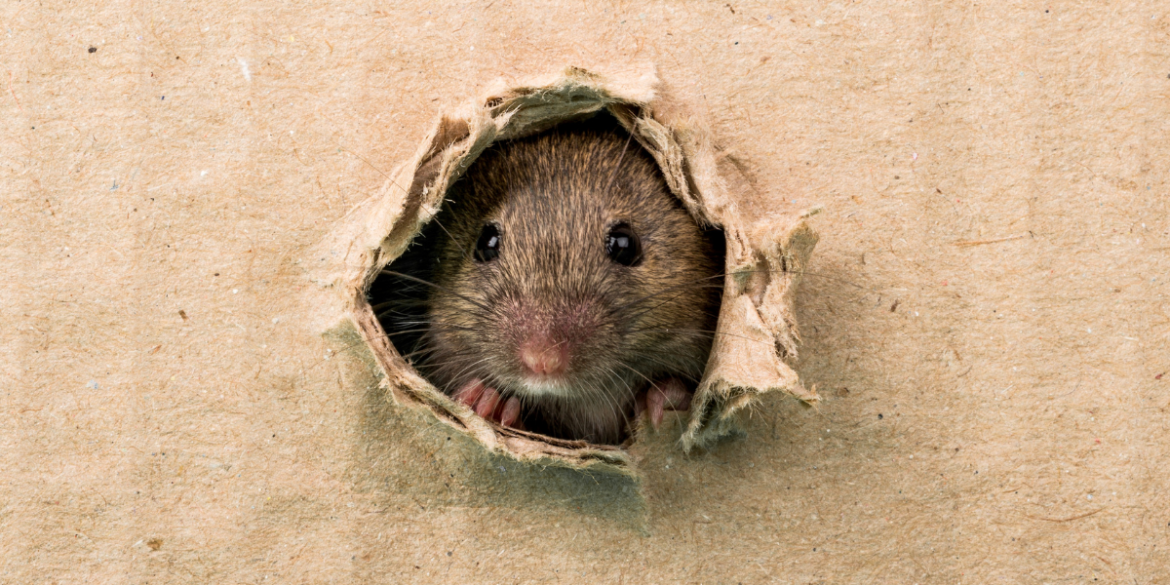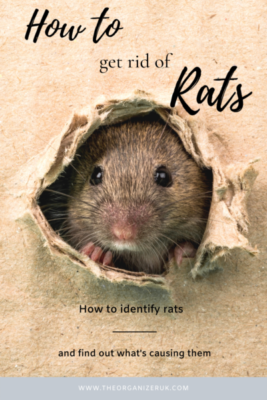Cleaning
How To Get Rid Of Rats: The Definitive Guide
There is nothing more spine-chilling than the thought that you might be sharing your house with rats. The noise they make alone can be terrifying, let alone the idea that you are sharing your kitchen with the dirty little blighters. In this post, we discuss how to get rid of rats from your home both inside and outside.

What are rats?
Rats are large grey/brown, toothy rodents with long, thin, furless tails. They are normally six to seven inches long, but some have grown to the size of a large house cat. Rats can weigh up to 18 oz.
Rats live and thrive in various conditions, homes, buildings, farms, gardens, and fields.
They carry diseases and can be very destructive to their surroundings. They Invade our homes, contaminate food, damage property, and spread disease. In fact, there are not many nice things we can say about a rat!
Rat reproduction rate
Rats reproduce at a staggering rate, and each female rat can give birth to nearly 2000 babies per year. The entire gestation period is approximately four weeks, so you can soon become overrun with rats. As soon as you think you’ve got a rat infestation, it would be best if you got it under control as quickly as possible. Rats have no mating season and can fall pregnant on average seven times a year, delivering approximately eight to ten baby rats per litter. The average life span of an adult rat is one year. However, rats that live indoors can live as long as three years.
What does a rat need to survive?
Prevention is better than cure when getting rid of rats, so let’s talk about what a rat needs to survive, thrive and reproduce.
Food. Rats will eat just about anything and everything that you leave out. They will chew through packages and shred boxes to get into food. They will eat out of pet food bowls and rubbish bins. Rats will eat small birds, lizards, and other rodents when in the wild. Rats don’t need to eat a lot each day. Typically 1-3 oz daily is enough to keep a rat satisfied.
Rats enjoy a variety of food and will quite happily feast on:
- Pet food
- Berries, seeds, and nuts
- Birdseed, grass seed
- Sweets, bread, and confectionary
- Compost and food waste
- Corn, beans, and other grains
- Meat and dairy products
- Garbage
- Feces
- Fox food and food left for squirrels
Water. Rats can survive up to a month without drinking water but will seek out water from drains, pet bowls, puddles, and ponds.
Warmth and shelter. Rats love to cozy down in loft insulation, wall cavities, drains, old furniture, and anywhere dark and dry.
How do you know you’ve got rats?
It can be hard to determine where a rat is living because they can travel up to 300 feet for food and often live in a different area from where they eat.
Signs of rat infestation
- Damage. You may notice that some of your food or wires have gnaw marks.
- Strange sounds. You may hear loud scratching noises, rustling, or squeaking.
- Droppings. There will always be a trail of droppings and urine where a rat has been.
- Greasy smears. Check your loft insulation, skirting boards, and walls for greasy trails from the rat’s waterproof coat. Rats will leave greasy marks along skirting boards and walls because they always follow the same pathways as they search for food.
- Footprints. Sometimes you may see rat footprints in the dust of an unused area of the home or in the mud outside. If you think you may have a rat, put some talcum powder or bicarbonate of soda where you think the rat is getting in and look for footprints in the morning.
- Bite marks on furniture, wires, boxes, and packaging. Rats keep their teeth sharp by constantly gnawing, so look for chew marks on wood, furniture, wires, or drywall around the home.
- Nests. Rats can make nests in soft furnishings such as settees and beds. Look out for any damage to cushions and mattresses. Rats typically stay relatively close to their nests, so inspect your garden for any holes that weren’t there before or any nests in shrubs, hedges, and sheds.
- Dead rats. If you have a rat infestation, you may see dead rats lying around from time to time.
- You see rats during the day. Rats are usually nocturnal, so if you see one out during the day, it’s probably a sign that you have a growing problem that needs to be dealt with immediately.
This post contains affiliate links, and The Organizer UK may earn commissions for purchases made through the links in this post. For more details, see here. Thank you so much for your support!
How do rats get in?
If there is a 2 cm gap or a space the size of two of your fingers, there is plenty of room for a rat to enter your home.
How to prevent rats from getting in.
Knowing how to keep rats away is key to averting an infestation. The secret to rat prevention is keeping a clean property and catching their tell-tale signs early.
- Collect rubbish frequently, and make sure all bins have a sealed lid and are emptied regularly. Read how to clean your wheelie bin here
- Trim trees and bushes, and trim overhanging tree branches to a distance over 5 feet from the house roof. Keeping trees trimmed and manicured will help stop rats and squirrels from jumping into your roof.
- Check around the home for any small spaces that rats can squeeze into, such as vents, drains, door holes, and wall cracks.
- Seal any gaps using concrete, caulk, expanding foam, metal plates, or wire wool.
- Keep your home clean and tidy inside and outside. Declutter, simplify, minimize. Don’t make it easy for the rats to live in your home.
- Don’t leave food out at night. Ensure bread, bagels, cakes, and confectionary are not left out at night. Invest in a bread bin like this one!
- Tidy away pet bowls and dirty dishes. Don’t leave our furry friends a midnight feast, or you are sending them an invitation to the party!
- Store pet food in a rodent-proof container like this one. Pet food is something people usually overlook when rat-proofing their home. Rats aren’t fussy and will happily feast on your pet’s food bowl.
- Keep all food in sealed containers like these, and be sure to clean up any spills or crumbs.
- Use a deterrent to get rid of rats naturally. Sprinkle black pepper, Cayenne pepper, Cloves, or Peppermint oil around the perimeter of the house to deter the rats from entering your home.
Keep your garden clean.
- Keep water cans upside down so they don’t collect water.
- Clean up any fallen fruit immediately.
- Don’t put out bird food, chicken food, or seeds.
- Don’t feed foxes.
- Clear up any overgrown hedges and shrubs.
- Get rid of clutter.
- Keep pipes, wood, woodpiles, gardening equipment, kid’s toys, and other garden stuff neatly organized off the ground.
- Store grass seed and bird seed in sealed containers like this one.
- Rats typically need 1oz of water per day, and they search for water, so keep your garden clear of any water in bird baths, buckets, pools, and ponds.
- Clean up any pet poop, as rats often eat feces, and pay attention to gardens and litter trays.
- Remove any potential nesting materials, such as cardboard boxes, newspapers, or old insulation.
Rat damage
Despite invading our homes and spreading diseases, rats can cause a lot of damage to property:
- Structural. Rats’ burrowing can undermine a building’s foundation, drywall, wood, and slabs.
- Fire risk. Rats perpetually gnawing through wires can cause an electrical fire risk.
- Metals such as copper and lead. Rats will chew through softer metals like copper and lead.
- Plastic. Rats will gnaw through plastic-coated wires and plastic containers.
- Foodstuff. Cardboard, paper, and all other food packaging will be gnawed through and shredded by a hungry rat.
- Books and paper. Rats like to use books and paper to shred to make a lovely cozy nest.
- Furniture. Rats will shred the stuffing in furniture, mattresses, and other soft furnishings to make a comfortable home for them and their family!
- Disease. Rats pose an immediate health risk to people they come in contact with. Rats can transmit Typhus, Leptospirosis, Salmonellosis (food poisoning), and Rat-Bite Fever to humans and animals. These diseases can spread through dust, water, and soil.
How to get rid of rats.
- Traps.
There are humane traps like this one which allow you to remove the rat to a new home, and inhumane rat traps like this one, which kill the rat instantly. You can bait the trap with whatever the rat has been eating in your home or some peanut butter.
- Poison.
Poison is a horrible way to exterminate rats as they die an excruciating death. Poisons should only use it outside. The problem with using poison is that if an owl or cat ate the rat afterward, it could also be poisoned and die. You should be careful when using poison around animals and children.
Please note you should only use all baits and poisons outside. - Dry ice
Dry ice is effectively used around the entrance hole to kill the rat. Dry ice should only use it outside.
- Birds
Certain birds, like owls and magpies, will eat rats.
- Cats
One way to get rid of rats is to get a cat. They love to kill a rat and will often do it for sport. However, cats are great at killing the odd rat that may wander onto your property. Still, they are not great at controlling an infestation once it has taken hold.
- Call the professionals.
Call the professionals. Calling in an expert is the first thing I would do to prevent the rat infestation from spreading. The professionals will determine precisely where the point of entry is and find out where the rats live. They will follow the correct steps to get humanely rid of them very quickly. Professional exterminators should help to get rid of rats permanently. The average cost of hiring professionals is between £75 and £400 for approximately ten traps, depending on your problem’s size.
Rat exterminators should offer a free quote, looking at the extent of the infestation, where the rats are coming from, and what is needed to fix the problem. These factors impact the final cost.
How to use a rat trap to get rid of rats
Trapping is better than bait for those who do not want to place rodenticides around their home.
If the rat population is small and not out of control, trapping can give quick results when done correctly.
Trapping enables you to get rid of the dead rat before its odor becomes unbearable and the dead rat is easily accessible.
- Provide a continual source of food until the rat stops eating.
- Place rat traps near walls in 20-foot intervals where rats have been seen.
- It is important to get rid of any dead rats found during the process. Seal the dead rat in a plastic bag and put it in with the household waste outside.
- Clear up any uneaten food afterward.
How to use bait or rat poison to get rid of rats
Rodenticides are poison baits that you should use in areas where domestic animals and children can’t access them.
- When using any rat poison, follow all directions on the box.
- To prevent accidental poisoning, use tamper-resistant bait stations which hold the baits in place and keep children and pets out. When using any rat poison, follow all directions on the box.
- Some poisons may need to sit within bait boxes or tamper-resistant bait stations like this one or constructed from cardboard or plastic.
- Rat poison is better when you have an extensive rat population in an outbuilding or barn and where the problem is out of control.
- If you have a significant infestation, you should call a professional, and they will do the most effective job.
How to get rid of rats in walls and ceilings
If you’re wondering how to get rid of rats in the walls or ceilings, you’re probably at the stage where you need to call in the professionals. A rat infestation in the house’s structure is better left to the exterminator, who will deal with the problem at the source.
I hope you found this information helpful and now know how to get rid of rats in the home and in the garden.
Remember, when it comes to killing rats, prevention is most definitely better than cure. Keep your home clean, tidy, clutter-free, and unattractive to rats! To find out how to start to declutter your home read this post.


